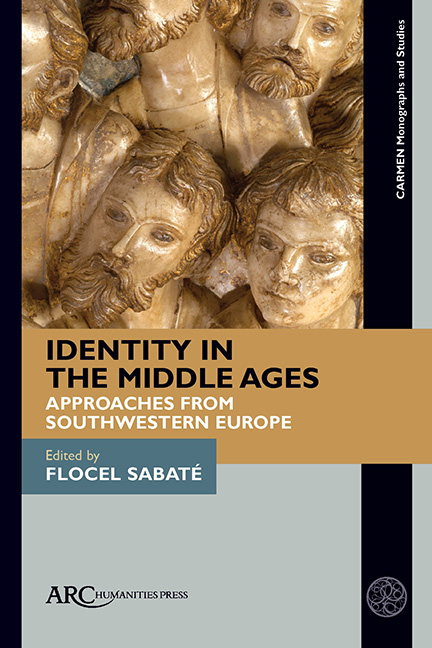Book contents
Foreword
Published online by Cambridge University Press: 20 January 2022
Summary
LET ME BEGIN by using this foreword to explain briefly the aims and ideas that inspire the present book, both through a substantial introduction analyzing what we understand by identity in the Middle Ages, and through specific studies that deepen our knowledge of relevant aspects of a topic of great political importance today.
The “power of identity,” to use the title of the second volume of the study of “The Informacion Age” by sociologist Manuel Castells, has been strongly emphasized during the last decades. Different studies have been devoted to analyze the search for identity in our plural societies, the intertwining of various types and levels of identity, the risks around identity conflicts and, in any case, the rise of identity, with its different meanings, in the articulation of current society. Too often history has been used to justify real, recreated, or imagined identities. This is not our aim. Noticing the search for identity in individuals and collectivities throughout history, and looking for new perspectives to reach the core of precedent societies, we adopt identity as an object of analysis, that is, as a challenge to open new ways and tools for historians’ work.
Certainly, this book places identity at the centre of a project to better understand medieval society. By exploring the multiplicity of personal identities, the ways these were expressed within particular social structures (such as feudalism), and their evolution into formal expressions of collective identity (municipalities, guilds, nations, and so on) we can shed new light on the Middle Ages. A specific legacy of such developments was that by the end of the Middle Ages, a different sense of collective identities, supported by the late medieval socio-economic structure, backed in law and by theological, philosophical, and political thought, defined society. What is more, social structures coalesced across diverse elements, including language, group solidarities, and a set of assumed values.
We understand that identity occupied that central position in defining medieval society with two allied concepts: memory and ideology. The former served to ground identity, while the latter consolidated a coherent common memory and identity. For this reason, this book has two companions devoted to each of these concepts.
- Type
- Chapter
- Information
- Identity in the Middle AgesApproaches from Southwestern Europe, pp. ix - xivPublisher: Amsterdam University PressPrint publication year: 2021

